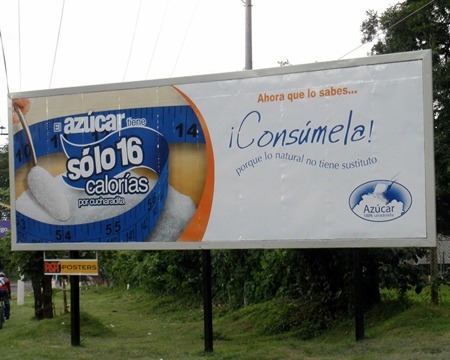The Big Sugar Conspiracy
One of the great ironies of food politics these days is this: while journalists and scientists are increasingly documenting the health consequences of diets way too high in added sugars, the producers of two forms of those sugars — sucrose and high-fructose corn syrup (HFCS) — are doing everything they can to decrease their rivals' market shares.
Once the election is over, I will write about the ugly legal battles between the producers of sugar cane and beets (sucrose) and the corn refiners who produce HFCS. But in the meantime, don't miss the current issue of Mother Jones.
It has just published an investigative report by journalist Gary Taubes and dental health administrator Cristen Kearns Couzens: Big Sugar's Sweet Little Lies: How the industry kept scientists from asking: Does sugar kill?
Their report is a detailed account of how the sugar industry manipulated scientists and government officials into overlooking the health problems caused by overconsumption of sugars and instead focusing on overconsumption of dietary fat (both removed from their caloric context, alas).
Their winning campaign, crafted with the help of the prestigious public relations firm Carl Byoir & Associates, had been prompted by a poll showing that consumers had come to see sugar as fattening, and that most doctors suspected it might exacerbate, if not cause, heart disease and diabetes.
With an initial annual budget of nearly $800,000 ($3.4 million today) collected from the makers of Dixie Crystals, Domino, C&H, Great Western, and other sugar brands, the association recruited a stable of medical and nutritional professionals to allay the public's fears, brought snack and beverage companies into the fold, and bankrolled scientific papers that contributed to a "highly supportive" FDA ruling, which, the Silver Anvil application boasted, made it "unlikely that sugar will be subject to legislative restriction in coming years."
The report is accompanied by riveting background information, examples of sugar advertisements, and formerly confidential documents:
- A Timeline of Sugar Spin
- How a Former Dentist Drilled Big Sugar
- WATCH: Q&A With Author Gary Taubes
- Secret Sugar Documents Revealed
- 10 Classic Sugar Ads
- Charts: How Our Sodas Got So Huge
Much of what's in this report came as news to me, but is consistent with what I know. Here, for example, is a comparison of the increasingly complicated and obfuscated sugar recommendations from the Dietary Guidelines for Americans from 1980 through 2010:
- 1980 Avoid too much sugar.
- 1985 Avoid too much sugar.
- 1990 Use sugars only in moderation.
- 1995 Choose a diet moderate in sugars.
- 2000 Choose beverages and foods to moderate your intake of sugars.
- 2005 Choose and prepare foods and beverages with little added sugars or caloric sweeteners, such as amounts suggested by the USDA Food Guide and the DASH eating plan.
- 2010 Reduce the intake of calories from solid fats and added sugars.
"Avoid too much sugar" is still good advice.
And here's a photo of a billboard in Guatemala, taken a couple of years ago by anthropologist Emily Yates-Doerr. If the sugar industry isn't selling enough sugar here, might as well push it onto people in emerging economies. (Photo courtesy of Emily Yates-Doerr)

